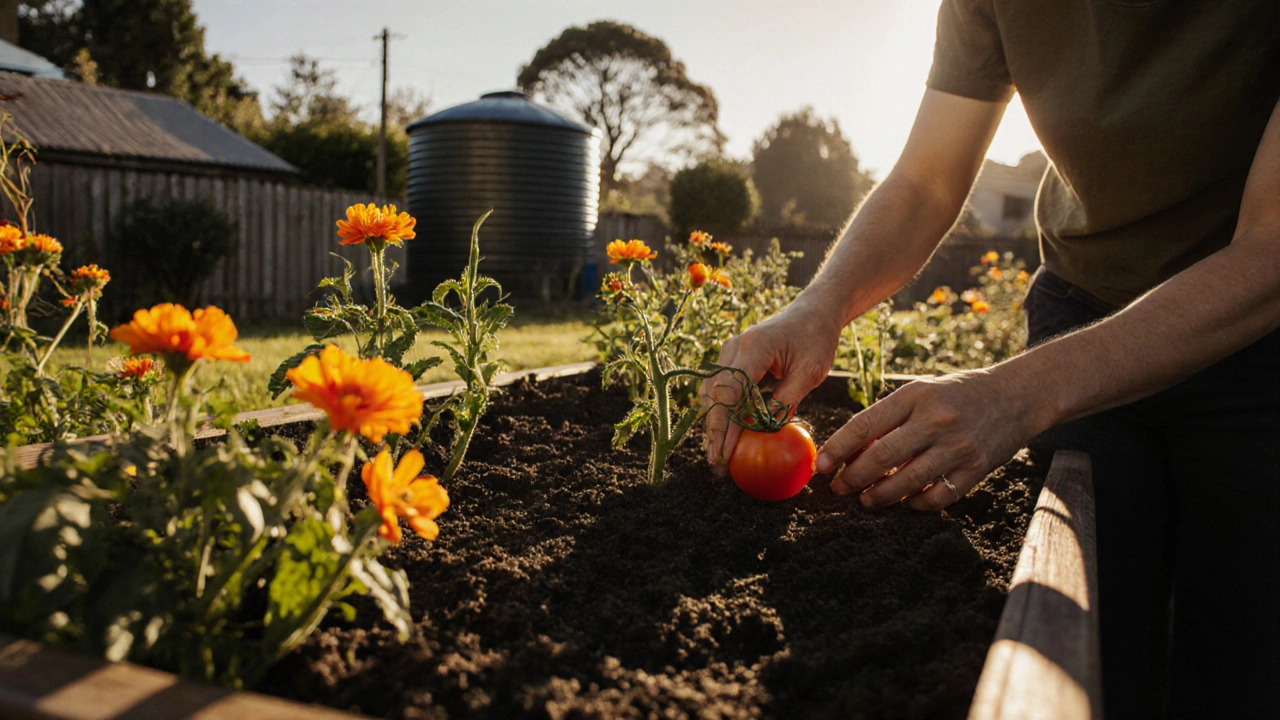Garden Planning: Smart Ways to Design a Low-Maintenance, Thriving Garden
When you start with garden planning, the intentional design of outdoor growing spaces to match your environment, goals, and available time. Also known as landscape design, it’s not about making a perfect lawn—it’s about setting up your garden so it thrives with minimal daily work. Most people think gardening means hours of weeding, watering, and fussing. But the best gardens? They’re the ones that barely ask for attention. That’s because smart garden planning skips the guesswork and builds in habits that do the work for you.
It starts with soil preparation, the foundation of any healthy garden, involving testing, amending, and structuring the earth to support plant growth. You don’t need expensive kits. Just check if your soil drains well, add compost if it’s too dense, and mulch to hold moisture. Poor soil makes every other step harder. Then there’s lazy gardener, a practical approach to gardening that prioritizes efficiency, using native plants, mulch, and natural systems to reduce labor. It’s not laziness—it’s strategy. Pick plants that already grow well in your area. Use mulch to block weeds and cut watering in half. Let grass grow a little longer. These aren’t shortcuts; they’re upgrades.
And when it comes to feeding your plants, organic fertilizer, natural materials like compost, manure, or plant-based blends that slowly release nutrients without harming soil life. isn’t just trendy—it’s smarter. Chemical fertilizers burn roots and kill microbes. Organic options feed the soil, not just the plant. That means your tomatoes, herbs, and flowers get steady food, year after year. You’ll see fewer pests, stronger roots, and less need to reapply. Plus, coffee grounds? They’re not just for your morning cup. Used right, they add nitrogen and improve soil texture—just don’t dump them straight on seedlings.
Good garden planning also means thinking ahead. Where will your plants be in three years? Will that sunflower shade out your lettuce? Will rainwater flow toward your veggie beds or away from them? A few minutes of layout planning saves hours of moving plants later. You don’t need fancy tools—just a notebook, a ruler, and maybe a free app to track sun patterns. Start small. Pick one corner. Test one new plant. See what works. Then expand.
What you’ll find below isn’t a list of perfect gardens. It’s a collection of real, tested ideas from people who want to grow food, flowers, or just peace—without burning out. You’ll learn how to till soil the right way, which fertilizers actually work in 2025, why some people call themselves lazy gardeners (and why they’re the ones with the healthiest plots), and how coffee grounds can help—or hurt—your plants. No fluff. No hype. Just what works, when, and why.
What Are the 10 Steps to Planting a Garden?
Categories
RECENT POSTS
Best Indoor Exercise: Top Workouts for Health and Fitness at Home
Get practical tips and a clear guide on the best indoor exercise. Learn which workouts deliver results, actual science behind them, and free ways to get fitter—right at home.
How to Improve Your Mental Wellbeing: Simple, Proven Steps for Daily Life
Learn simple, science-backed ways to improve your mental wellbeing every day - from walking and sleep to connection and reducing screen time. No therapy required, just small habits that make a big difference.
How Long Does It Realistically Take to Get in Shape at Home
Realistic timeline for getting in shape at home with basic equipment - no gym needed. See how long it takes to build strength, lose fat, and feel confident with consistent workouts.
UK's Biggest Crime Problem: Examining the Surge in Fraud and Cybercrime
Fraud and cybercrime now top the charts as the UK's biggest crime problems. Dive into the numbers, real-world impact, and find out how to protect yourself right now.
Best 7 Day Workout Routine for Beginners and Fitness Enthusiasts
Looking for a practical weekly fitness guide? Dive into a detailed, actionable 7 day workout routine with expert tips, flexible plans, and hacks for real results.





